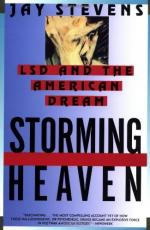|
This section contains 3,746 words (approx. 13 pages at 300 words per page) |

|
LSD is the abbreviation for lysergic acid diethylamide. It is the most potent member of a group of hallucinogenic substances called the indole-type HALLUCINOGENS. These drugs have structural similarities to another indole, the neurotransmitter SEROTONIN.
History
LSD was originally synthesized at the Sandoz Pharmaceutical Company, in Switzerland, as part of a long project begun in the 1930s. The aim was to develop useful medications that were derived from ergot, a fungus (Claviceps purpurea) that infects such grasses as rye. Some of these compounds were found to be useful in medicine—such as methysergide, for the treatment of migraine headaches, and ergotamine, which is widely used in obstetrics to induce contractions of the uterus and stop bleeding after the delivery of a baby. These medications do not have hallucinogenic properties.
The chemist in charge of this drug development project...
|
This section contains 3,746 words (approx. 13 pages at 300 words per page) |

|


